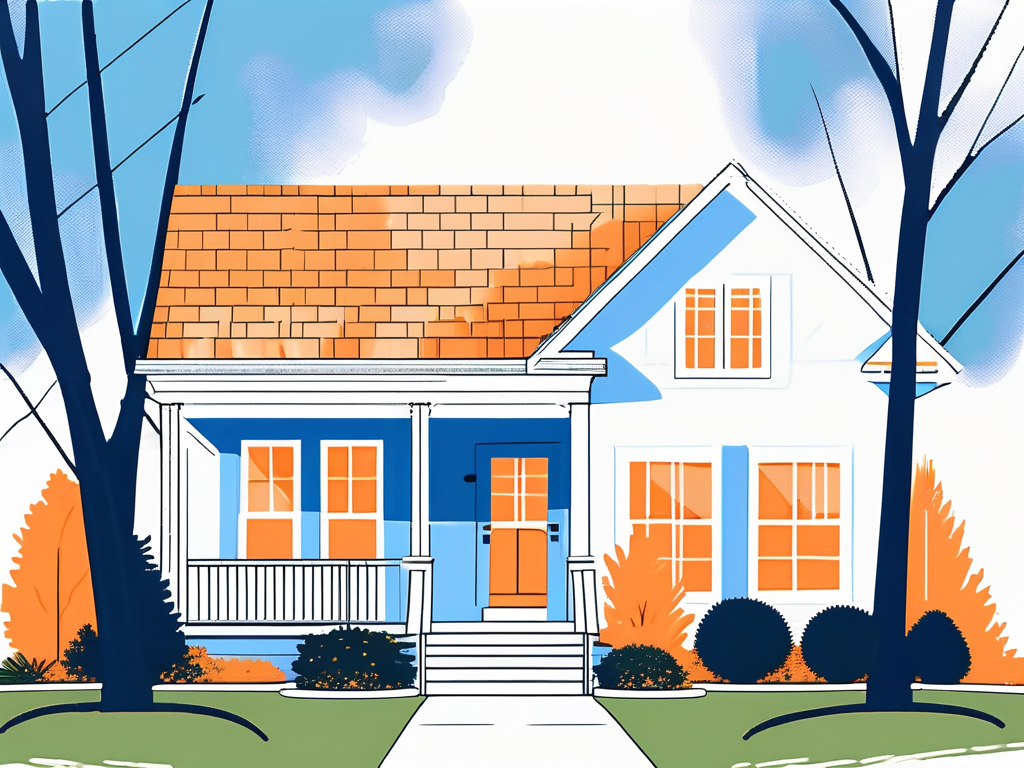When it comes to improving the aesthetic and value of your home, residential painting is one of the top choices for homeowners in Columbus. This guide provides answers to frequently asked questions to help you navigate the world of residential painting.
Understanding Residential Painting
Residential painting involves the application of paint on the interior and exterior surfaces of residential properties. From living rooms to bedrooms and front porches to backyard fences, the right touch of paint can transform a space significantly. The colors and finishes chosen can influence the mood of a room, making it feel more inviting or energizing, depending on the homeowner’s preferences. Furthermore, a well-executed paint job can enhance the overall curb appeal of a home, potentially increasing its market value.
What is Residential Painting?
Residential painting is a specialized service that focuses on painting homes, whether single-family residences or multi-unit buildings. The process includes prep work, which involves cleaning and repairing surfaces, priming, and the actual application of paint. This preparation is crucial as it ensures that the paint adheres properly and lasts longer. The types of surfaces involved can range from wood, drywall, to metal and concrete, each requiring specific treatments and types of paint. For instance, exterior surfaces may need weather-resistant paints, while interior walls might benefit from washable finishes that can withstand everyday wear and tear.
In addition to the technical aspects, residential painting also encompasses the aesthetic choices that reflect the homeowner’s style. Color theory plays a significant role in this process, as different hues can evoke various emotions and perceptions. For example, soft blues and greens are often associated with tranquility, making them ideal for bedrooms, while vibrant yellows can create a cheerful atmosphere in kitchens and dining areas.
Importance of Professional Residential Painting
While some homeowners may opt for DIY painting projects, hiring a professional painting service brings various benefits. Professional painters have the expertise to choose the right materials and techniques that ensure a durable, long-lasting finish. They are knowledgeable about the latest trends in paint technology, including eco-friendly options that minimize environmental impact. This expertise extends to understanding the nuances of different paint types, such as matte versus gloss finishes, and how they can affect the overall look of a space.
Moreover, professional painting reduces the risk of mistakes that could lead to costly repairs. They also complete jobs in a timelier manner, allowing you to enjoy your newly painted space faster. Additionally, professionals can provide valuable advice on color selection and design trends, helping homeowners make informed decisions that enhance their living environment. By investing in professional services, homeowners can achieve a polished and cohesive look that reflects their personal taste and elevates the aesthetic appeal of their home.
Pre-Painting Considerations
Before you begin any painting project, there are several key considerations to keep in mind. These include color selection, paint type, and overall project costs. Taking the time to prepare can save you time and stress later on.
Choosing the Right Paint Color
Choosing a color for your home can be a daunting task. It’s essential to consider both personal preference and the overall feel you want to create. Lighter colors often make spaces look larger and more inviting, while darker shades can offer warmth and coziness.
Besides personal taste, consider the architectural style of your home and how the paint color pairs with other elements, such as the roof and landscaping. Sampling colors on your walls can also help you visualize the final look. Moreover, it’s wise to observe how different colors interact with natural light throughout the day, as this can dramatically alter the appearance of your chosen shade. For instance, a color that appears vibrant in the morning sun may look muted by evening light, so testing in various lighting conditions is crucial.
Selecting the Best Paint Type
Paint comes in a variety of formulations, each serving different purposes. Latex paint is a popular choice for its ease of use and quick drying times, especially for interior walls. On the other hand, oil-based paints offer durability and are often used for trim and moldings.
Additionally, consider the finish you want, ranging from matte to glossy. Higher gloss finishes are generally easier to clean and can enhance durability, making them suitable for kitchen or bathroom applications. It’s also important to think about the environmental impact of your paint choice; many manufacturers now offer low-VOC (volatile organic compounds) options that are better for indoor air quality. These eco-friendly paints come in a variety of colors and finishes, allowing you to maintain your aesthetic while being mindful of health and environmental concerns. Furthermore, if you’re painting outdoors, be sure to select a paint that can withstand the elements, ensuring that your hard work lasts for years to come.
The Painting Process
The process of residential painting is systematic and methodical, ensuring that each step is completed before moving onto the next, to achieve the best results.
Steps Involved in Residential Painting
The residential painting process generally starts with a thorough cleaning of the surfaces to be painted, followed by necessary repairs such as patching holes or sanding rough spots. After preparation, primers may be applied to ensure paint adhesion and color accuracy.
Once the primer is dry, the chosen paint is carefully applied, often in multiple coats, to ensure a rich, consistent color. Each coat should dry fully before applying the next. Finally, clean-up procedures involve removing painter’s tape, disposing of leftover materials, and conducting a final inspection.
Time Frame for a Residential Painting Project
The length of time required for a residential painting project can vary greatly depending on the size of your home, the number of rooms being painted, and the complexity of the job. Generally, a small to medium-sized room may take a couple of days, while larger homes or extensive exterior projects could take a week or more.
Weather conditions can also have an impact on the timeline, especially for outdoor painting. It’s essential to work with your contractor to establish a realistic timeframe, considering all possible variables.
Post-Painting Care and Maintenance
Once your home has been freshly painted, the next step is understanding how to maintain its beauty and extend the life of the paint job.

Tips for Maintaining Your Home’s New Look
To keep your home looking fresh after a new paint job, regular cleaning is vital. Dust and dirt can accumulate over time and dull the paint finish. Opt for gentle cleaning methods to avoid damaging the paint.
Check for any signs of wear or damage regularly. Promptly addressing issues like peeling paint or mold not only keeps your home looking great but also prevents more extensive repairs in the future.
When to Consider Repainting
Knowing when to repaint can save you from severe home degradation. Signs that it is time to repaint can include flaking or peeling paint, fading colors, or the appearance of stains.
Generally, interior paint lasts between five to seven years, while exterior paint may last between seven to ten years, depending on environmental conditions. Regular assessments will help you keep track of your home’s needs.
Hiring a Residential Painting Contractor in Columbus
When it comes time to hire a professional contractor for your residential painting project, it’s crucial to choose wisely to ensure quality work.
Qualities to Look for in a Painting Contractor
Reputable painting contractors should have a proven track record of quality work, positive reviews, and preferably, local experience in Columbus. They should provide a detailed estimate that includes the scope of work, materials used, and a timeline for completion.
Effective communication is also essential. A good contractor will listen to your needs and be transparent about the process, helping to ensure that your vision aligns with what they deliver.
Understanding Painting Service Estimates
When reviewing a painting estimate, be aware of what is included. A comprehensive estimate should detail labor, materials, preparation work, and any additional costs. It may also provide information on the types of paint and finishes to be used.
Don’t hesitate to ask questions about any unclear estimates. Understanding each component will help you make an informed decision and avoid unexpected costs as the project progresses.

